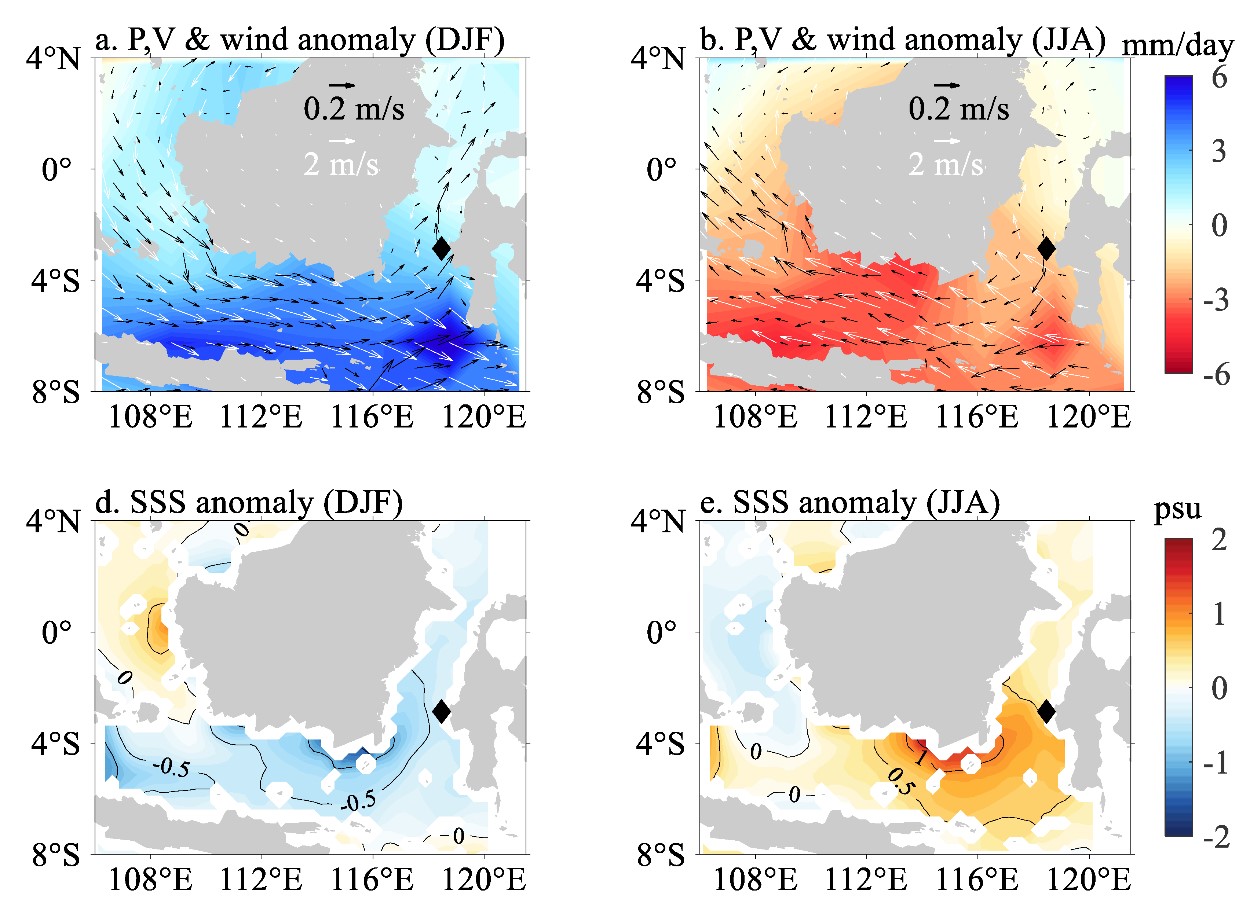How important the salinity effect is to the seasonality of the Makassar Strait Throughflow?
The Makassar Strait Throughflow (MST) accounts for approximately 77% of the total volume transport of the Indonesian Throughflow (ITF), thereby significantly influences mass and heat exchanges between the Indo-Pacific basin and global climate.
Twenty years ago, Gordon et al. (2003, Nature) proposed the “freshwater plug” hypothesis about the seasonal variability of MST, which was extensively cited in subsequent studies. However, there has long been a dearth of quantitative research elucidating both the existence and specific contribution of this salinity effect. For this purpose, an international team led by Professor Shijian Hu from the Institute of Oceanology of CAS (IOCAS) quantified the contribution salinity effect on the seasonal variability of MST with long-term observations and high-resolution numerical simulations, and they found that the freshwater forcing and salinity effect dominate the seasonal change of MST. The findings have recently been published in the journal Geophysical Research Letters.

Figure 1. Seasonal variability of rainfall (colored), sea surface current field (black arrows), wind field (white arrows), and salinity in the Indonesian seas
Given that the MST is controlled by the pressure gradient along the Makassar Strait, the team focused on the role of salinity change in the meridional gradient of steric height in the Makassar Strait.
They compared the in situ observations from Arlindo and MITF and high-resolution reanalysis product from the GLORYS, and found that the MST is a southward current with significant seasonality. In boreal winter, a weak northward current is present in the upper layer of the southern Makassar Strait, which is subject to the northward dynamic height gradient influenced by both the halosteric and thermosteric components. Quantitatively speaking, the halosteric dynamic height closely associated with the seasonal cycle of salinity contributes (69.6±11.7) % to the total seasonal variability of the sea surface dynamic height gradient within the Makassar Strait. In boreal winter, the northwest monsoon leads to an increasing in freshwater transport through the Karimata Strait and increasing of local precipitation in the Java Sea, further causes a decline of salinity and an anomalous northward pressure gradient in the Makassar Strait, and hence resulting in a weakened throughflow. The opposite occurs in boreal summer. This might be the first time clarify the quantitative contribution of freshwater plug.

Figure 2. Seasonal cycles (a, b, c, d) of the absolute dynamic topography (ADT), sea surface dynamic height (DH), thermosteric dynamic height and thermosteric dynamic height, and (e) the differences between the southern (4° S-2.8 °S) and northern (2.8° S-2 °N) parts of the Makassar Strait.
Collaborators of this study include Shijian Hu, Xi Lu, Guan Cong and Wang Fan from IOCAS, Mingting Li from Sun Yat-sen University, and Janet Sprintall from Scripps Institution of Oceanography, University of California San Diego.
“This quantitative study not only confirms the importance of freshwater plug and salinity effect mechanism in the seasonality of MST, but also deepen our understanding of the ITF dynamics”, said Professor Shijian Hu.
Reference:
Lu, X., S. Hu, C. Guan, M. Li, J. Sprintall, and F. Wang (2023), Quantifying the Contribution of Salinity Effect to the Seasonal Variability of the Makassar Strait Throughflow, Geophysical Research Letters, 50(21), https://doi.org/10.1029/2023GL105991.